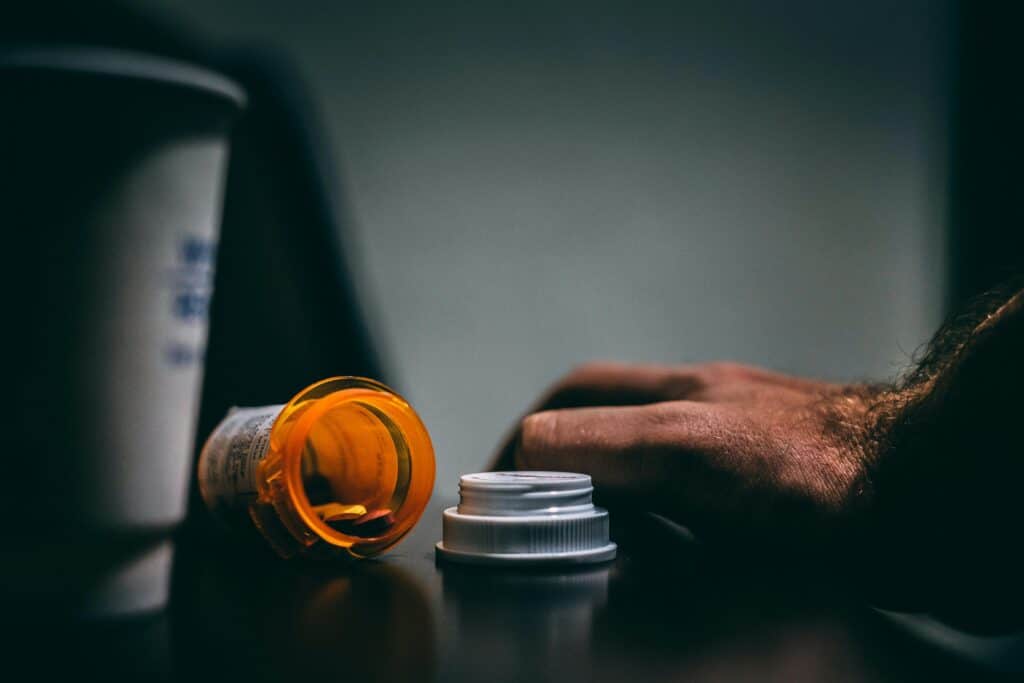There are many options for the most addictive pain pills in Maryland, including inpatient treatment centers, outpatient treatment centers, and more. The type of treatment a person requires will depend on the severity of their addiction to pain pills, what they’re addicted to, and how long they’ve been using opioids.
The opioid epidemic has raged on over the last few years, causing more and more overdoses. Many opioid addicts develop an addiction because of a prescription to pain pills, like oxycodone or fentanyl. Because doctors prescribe these medications so haphazardly, many patients become dependent completely on accident.
Pain pills range in severity but are all generally classified as being incredibly addictive. Here are the top five most addictive pain pills.
What is The Strongest Pain Killer?
Pain pills, also known as opioid analgesics, are a class of drugs used to relieve pain. They work by binding to specific receptors in the brain and spinal cord, reducing the perception of pain and increasing the threshold for pain. Opioids are commonly prescribed for moderate to severe pain caused by injury, surgery, or chronic conditions such as cancer or arthritis.
While these drugs can be effective in managing pain, they can also be highly addictive and have a high risk of overdose. As a result, they are typically used for short-term pain management, rather than as a long-term solution. In addition, opioid use can lead to physical dependence, where a person requires increasing amounts of the drug to achieve the same level of pain relief.
It’s important to use pain pills only as directed by a healthcare provider and to be aware of the potential risks and side effects. Misuse of these drugs can result in serious harm, including addiction, overdose, and death.
What Are The Most Addictive Pain Pills?
The strongest pain medication is generally considered to be opioids such as fentanyl, oxycodone, and morphine. There are also other types of pain medication available, such as nonsteroidal anti-inflammatory drugs (NSAIDs) and acetaminophen, which may be appropriate for certain types of pain. It’s incredibly important to use opioids only as directed by a healthcare professional and to be aware of the risks associated with their use.
Fentanyl
Fentanyl is one of the strongest opioid drugs on the market and is often used on the streets to cut or lace other drugs to make them more potent. Because fentanyl is so strong, it’s prescribed less often than other opioids. Fentanyl is usually reserved for intense pain, prescribed for post-operation patients and those experiencing breakthrough pain while taking other opioids.
Fentanyl is most commonly associated with overdose because it’s potent in such small amounts. When people lace opioids with fentanyl and don’t tell them, they’re putting people at a much higher risk for overdose. For this reason, fentanyl is one of the most addictive and dangerous pain pills.

According to the Centers for Disease Control and Prevention (CDC), the number of fentanyl-related overdose deaths in the United States has risen dramatically in recent years. In 2013, there were approximately 1,000 deaths related to fentanyl. By 2018, that number had risen to over 28,000. This trend has continued, with over 36,000 fentanyl-related deaths reported in 2020, accounting for more than a third of all opioid overdose deaths in the country.
The increase in fentanyl-related deaths is largely due to the drug’s growing presence in the illegal drug market, where it is often mixed with other drugs such as cocaine, methamphetamine, and heroin to increase their potency. This has made it difficult for people to know what they are consuming, leading to a high risk of overdose and death. In addition, the potency of fentanyl means that even a small amount can have a deadly effect, making it especially dangerous.
Oxycodone
When thinking about opioids, many people think of oxycodone. Oxycodone is the most commonly prescribed painkiller, often prescribed for surgery recovery, traumatic injuries, and chronic pain. In 2013, there were 53 million oxycodone prescriptions filled by pharmacies in the United States.
Oxycodone is a slow-release pain medication, meaning that the drug is released into the body over a long period of time (approximately 12 hours). However, when oxycodone is taken consistently, the body gets used to it. It’s very easy for patients to build up a tolerance, and even easier to become dependent on the drug.
While oxycodone can be effective in managing pain, it can also be highly addictive and carry a significant risk of overdose. As a result, it is typically prescribed for short-term pain management, rather than as a long-term solution. Misuse of oxycodone can lead to physical dependence, where a person requires increasing amounts of the drug to achieve the same level of pain relief.
In addition, oxycodone can have serious side effects, including respiratory depression, nausea, dizziness, and confusion. Taking high doses of the drug can also slow or stop a person’s breathing, leading to unconsciousness or death. The risk of overdose is increased when oxycodone is combined with other drugs, such as alcohol or benzodiazepines, or when it is taken in a way that is not prescribed, such as crushing and snorting the pain pills.

Percocet
Unlike fentanyl and oxycodone, Percocet is a brand-name drug. Percocet contains both acetaminophen and oxycodone. This drug is used to combat pain, but patients can quickly become dependent on it. Percocet works in the same way that heroin does, producing a high that results in a euphoric feeling. Like other opioids, Percocet is highly addictive and patients should avoid taking it consistently to avoid addiction.
Like other opioids, Percocet can lead to physical dependence and withdrawal symptoms if used for an extended period of time. Overdose from Percocet can occur when a person takes too much of the drug, causing serious and potentially life-threatening symptoms such as respiratory depression, unconsciousness, and death.
Percocet can also cause adverse effects such as nausea, dizziness, drowsiness, and confusion. The risk of these side effects is increased when the drug is taken in a way that is not prescribed, such as crushing and snorting the pills, or when it is combined with other substances, such as alcohol.

Hydrocodone
While many of the drugs on this list are used to manage severe pain, hydrocodone is commonly used to manage moderate to severe pain. Because it’s prescribed more frequently to those who aren’t experiencing high levels of pain, patients may feel a stronger high when using this drug, making it easier for them to become dependent.
Vicodin is the brand name for hydrocodone and is the most commonly prescribed opiate drug in the United States, alongside forms of oxycodone.
While hydrocodone is effective in treating pain, it also has the potential to cause harm, especially when taken in large doses or misused. The drug can lead to physical dependence, tolerance, and addiction, which can have serious consequences for the individual’s health and well-being.
Additionally, hydrocodone can cause a range of side effects, such as drowsiness, nausea, and constipation, and it can interact with other medications, making it important for individuals to use it under the close supervision of a healthcare provider. Overdose is also a risk, as hydrocodone can slow breathing and heart rate, leading to death.

Demerol
Demerol or meperidine is often used to treat pain associated with childbirth. It’s also often prescribed after heart attacks to manage chest pain, as well as after severe accidents or traumatic injury. Demerol is known for having a strong high associated with it, which means the risk of addiction is high for patients using the drug.
The drug can lead to physical dependence, tolerance, and addiction, which can have serious consequences for an individual’s health and well-being. Additionally, Demerol can cause a range of side effects, such as drowsiness, nausea, confusion, and hallucinations, and it can interact with other medications, making it important for individuals to use it only under the close supervision of a healthcare provider. Overdose is also a risk, as Demerol can slow breathing and heart rate, leading to coma or death. Demerol is also known for having intense withdrawal symptoms, so patients must work with their doctor in order to stop using the drug safely.
Find Treatment For The Most Addictive Pain Pills
If you’re struggling with opioid addiction, it’s time to seek help. Thankfully, opioid addiction treatment in Maryland is readily available. Comeback Care recognizes the dangers and potent effects of both hydrocodone and Demerol, and we are committed to helping individuals who have been affected by opioid addiction.
If you or a loved one is struggling with opioid dependence, we encourage you to reach out to us for help. Our experienced team of professionals will work with you to develop a personalized treatment plan that addresses your specific needs and helps you achieve a successful recovery. We offer a range of evidence-based therapies and support services, including medical detox, individual counseling, group therapy, and aftercare planning.
Don’t let opioid addiction control your life any longer. Take the first step towards a brighter future and call Comeback Care Recovery Center today.


